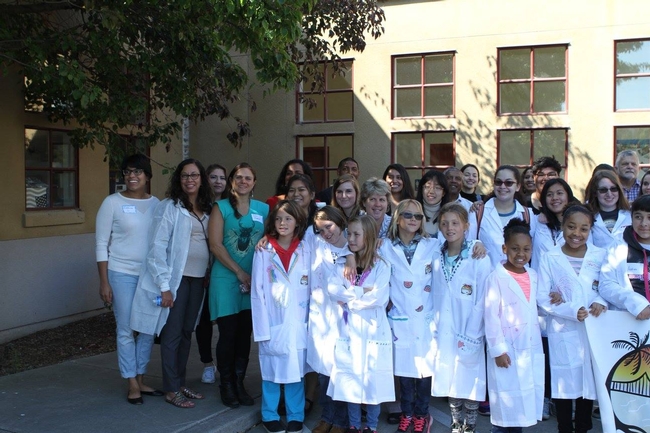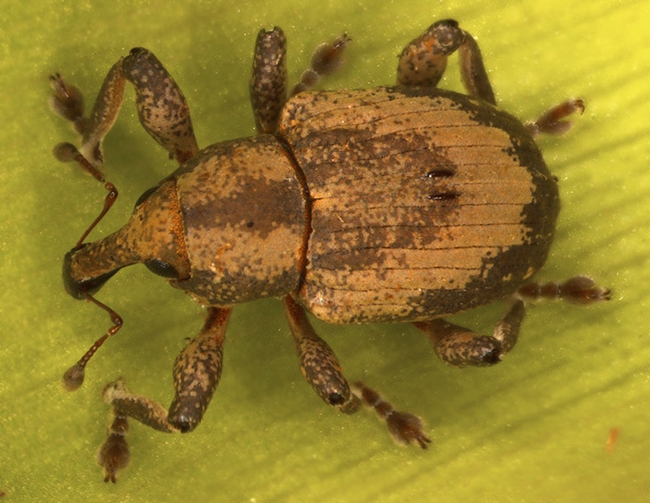On a bright Saturday morning, girls ages 10-16 started tearing apart water hyacinth plants, some with exclamations of disgust, and others filled with joyful excitement.
Here, on August 13th at the West Contra Costa Boys and Girls Club, I lead a ‘Global Change Biology' workshop for the ‘Greenlight 4 Girls (G4G), Bay Area Event', encouraging young girls to pursue futures in STEM science.
I started the workshop with a discussion of ‘Global Change Biology'. I am sure many of you (just like many of the girls) are very familiar with the term ‘Climate Change'. Global Change Biology is an upcoming field that investigates the biological impacts of both climate change (e.g. global warming) and global change (e.g,. globalization and the consequences of global trade and worldwide shipping). For instance, it is now easier for invasive organisms to reach new regions of the globe (due to human transport of plants and animals, as well as accidental transport of organisms in ship ballast); and easier for certain organisms to adapt to and persist in these novel regions that may now have more similar climates to the origin of these invasive species due to global warming. In addition, Global Change refers to the changes that humans are making to the environment, such as adding levees to prevent flooding, or barricading fresh water from contact with salt water. All of these changes can result in optimal environments for some invasive species and non-optimal environments for some native species.
The Sacramento-San Joaquin Delta has been modified over the years to suit our needs for freshwater, farming, and recreational activities. Over these years, we have seen a huge influx in invasive species such as the aquatic weeds water hyacinth (Eichhornia crassipes) and Brazilian elodea (Egeria densa). To combat these invasive aquatic weeds the state has relied on chemical, mechanical and biological control methods.
As I specialize in the field of biological control of invasive species, I gave a brief background to the girls on the concepts of classical biological control, and the history of biological control of water hyacinth in the Delta.
I passed out a mid-sized water hyacinth plant from the Delta to each girl to destruct in search of the most abundant biological control agent of water hyacinth in the Delta: Neochetina bruchi (Coleoptera: Curculionidae). These weevils are hard to find, as the adults like to hide during the day, or when subjected to bright light; the pupae wrap themselves up in the roots thereby exhibiting excellent camouflage, and the eggs and larvae are inside of the leaf petioles, protected from discovery unless the plant is torn apart. I warned the girls to be careful so as not to shred the weevils in the process (particularly the larvae). Every time a girl found a weevil, I would hear an exuberant yelp of joy, surrounded by sighs of disappointment from the other girls that were still searching.
By the end of the workshop, everyone's hands were successfully covered in water hyacinth slime and everybody had gotten to at least see all of the life stages of N. bruchi. We also had time at the end of the workshop for questions ranging from topics concerning entomology, the state of the Delta, to what it is like to be a woman in science. It was a successful day for outreach!
For more on my work, please stay tuned as my postdoctoral research focuses on the role of N. bruchi in the control of water hyacinth, and the potential mechanisms that may be preventing effective biological control. I will cover this in a future blog here. I also will be posting about my new research at my website (currently in progress).
Julie V. Hopper is a Delta Science Postdoctoral Fellow. This work is conducted in cooperation with the Delta Region Areawide Aquatic Weed Project (DRAAWP).


